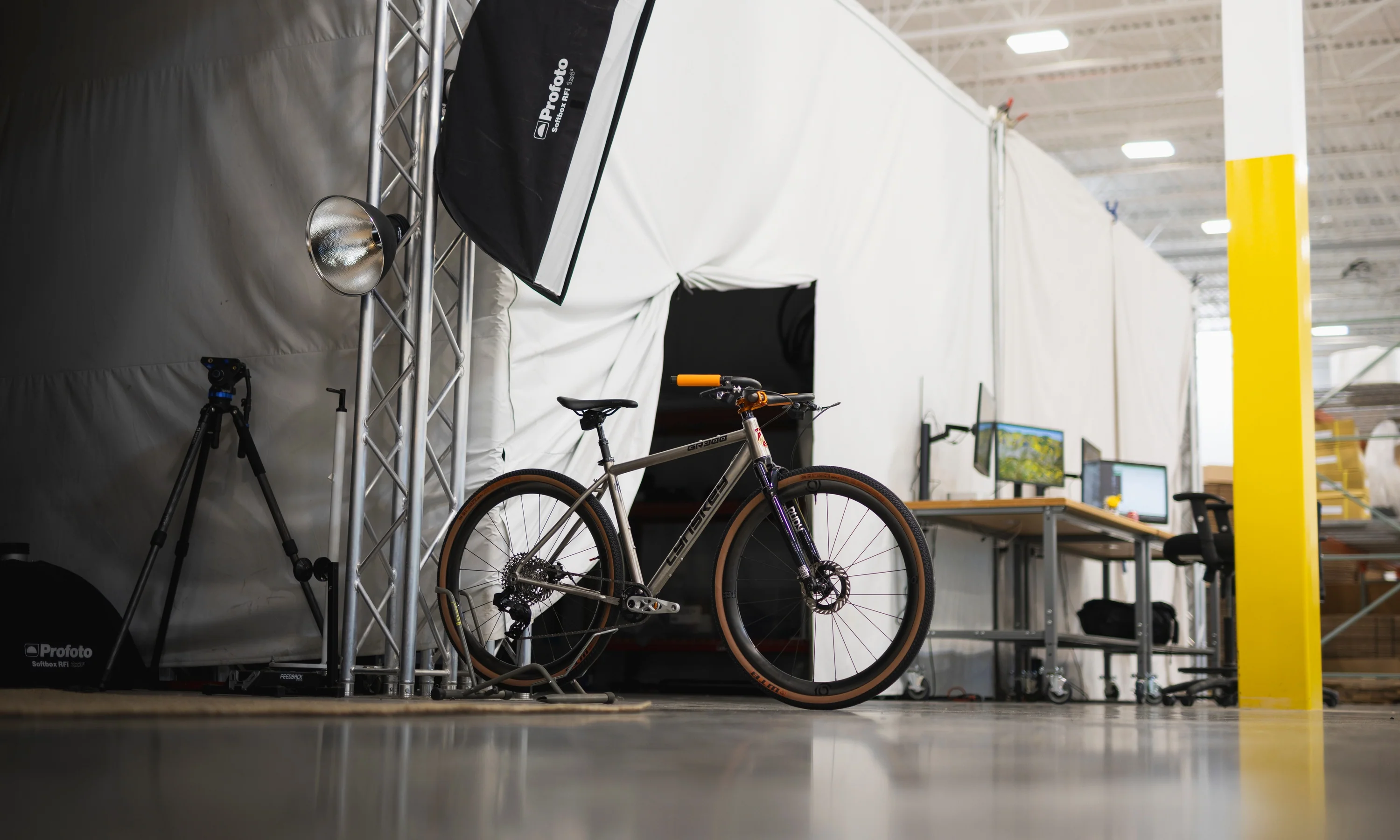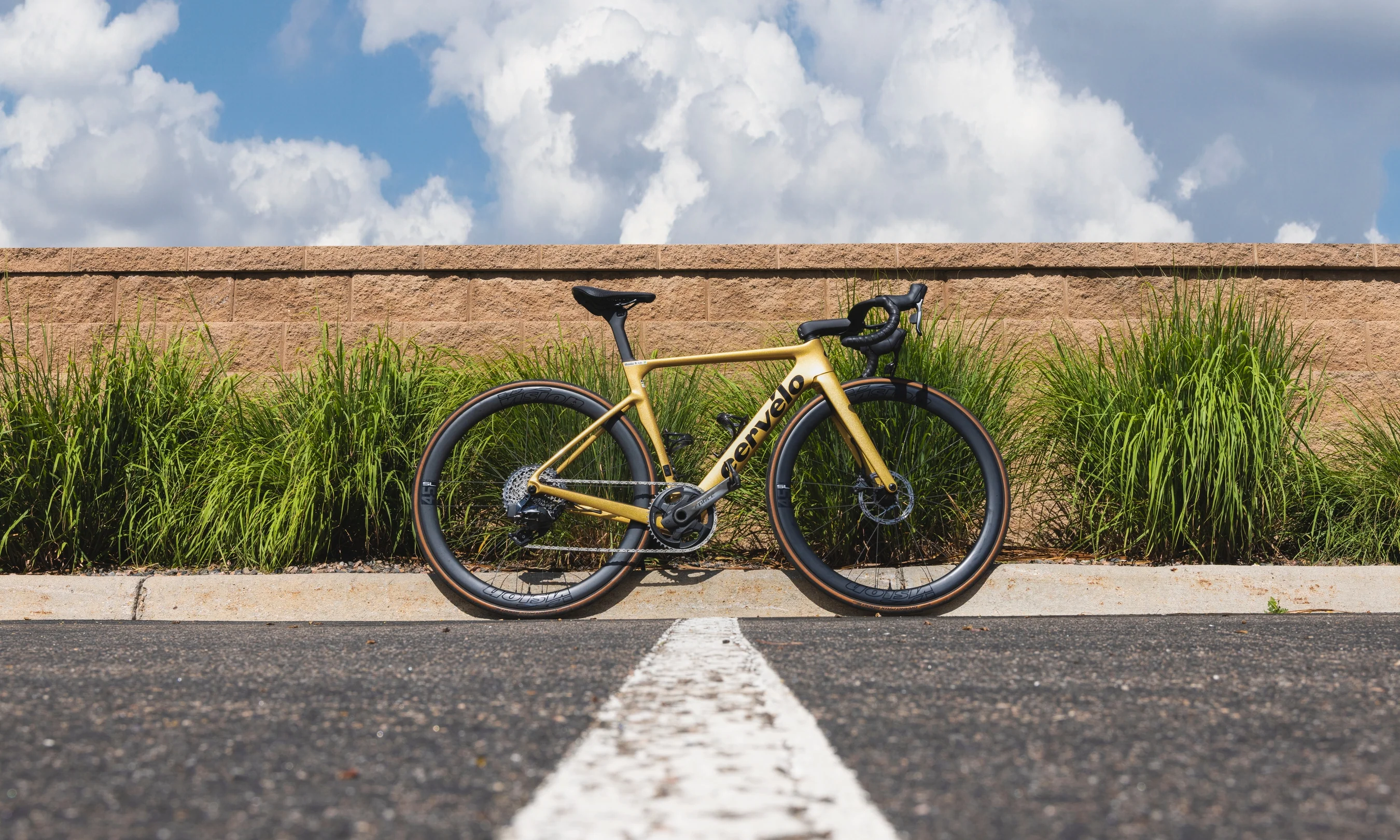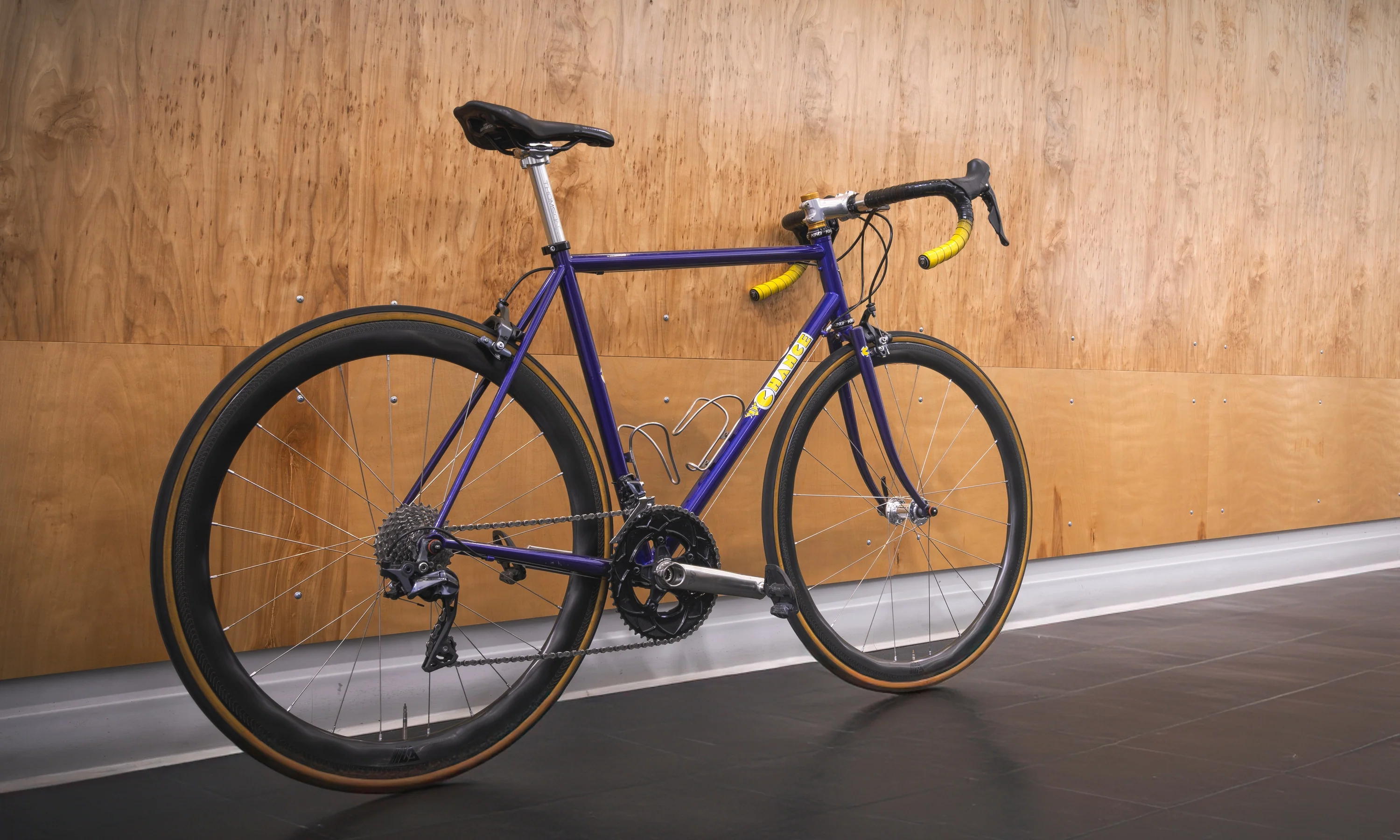I first fell in love with Colnago’s lugged carbon bikes about 10 years ago. Yukiya Arashiro was a domestique riding for Europcar in the 2013 Tour de France, and every time he was on camera, all I could do was stare at his bike. It was a Colnago C59, custom-painted to celebrate his Japanese national championship win.
 Arashiro's dreamy 2013 Colnago C59. Photo: Dave Rome/Bike Radar
Arashiro's dreamy 2013 Colnago C59. Photo: Dave Rome/Bike Radar
Against his dark green kit, the bright white frame shone like a sunbeam. To me, it is still one of the most beautiful pro race bikes ever made. Then, the next year, Colnago released the C59's successor, the C60, and this new and improved version quickly climbed up my list of dream bikes.
This week, I came across a 2017 Colnago C60 hanging near the wash bay. It had just been cleaned up, so it seemed like the perfect opportunity to snag some nice photos of one of my favorite bikes. Yes, it's not the fastest or the lightest bike (this size 52s is 16 lbs 10 oz), and it uses some outdated construction methods. But every time I see a lugged carbon Colnago come through TPC, I take a few seconds to get up close and admire it. I think they’re still brilliant, and here’s why.
[button]Shop Road Bikes[/button]
The Origin of Colnago’s Lugged Carbon Frames
 Ernesto Colnago. Photo: Colnago
Ernesto Colnago. Photo: Colnago
Colnago’s founder, Ernesto Colnago, was one of the first to recognize carbon fiber’s potential for framebuilding and he began experimenting with it back in the early ‘80s. Creating a carbon bike frame back then was a matter of trial and error. He spent countless hours testing different molding techniques, manufacturing processes, and layups. Then, in 1981, he unveiled his first rideable concept, the CX Pista track bike, which featured the world’s first full monocoque carbon fiber bicycle frame.
His monocoque carbon bike frame was impressive, but unfortunately, it was simply too expensive and labor-intensive for him to mass-produce. To bring carbon fiber bikes to the masses, Colnago needed a new approach. Or actually, an old approach. He decided to build carbon frames by joining together carbon fiber tubes and lugs, the same way steel bikes had been built for decades prior. The technique had also been used on the Look KG 86 that Greg Lemond rode to win the 1986 Tour de France. But the KG 86 used aluminum lugs and it never went mainstream.
Lugged construction allowed Colnago to mass-produce carbon bikes that were light, stiff, and durable enough to compete with the top steel frames of the time. It also meant Colnago could offer a wide range of sizes too.

A Colnago C40 in Mapei colors.
The Colnago C40 was Colnago's first production bike using lugged carbon construction. It arrived in 1994, and in 1995, it became the first carbon bike to win Paris-Roubaix under Franco Ballerini. Then the next year, it swept the Paris-Roubaix podium with Johan Museeuw, Andrea Tafi, and Gianluca Bortolami. The C40 represented the beginning of the end for steel bikes in the pro peloton. Without Colnago’s vision and persistence, the landscape of modern cycling might look very different.
Refining Lugged Carbon With the C60
 Colnago still makes lugged carbon frames today (the latest version is the C68). It launched the Colnago C60 in 2014, 20 years after the original C40. Compared to the previous generation C59 (the bike that originally sparked my own interest in Colnago bikes), the C60 frame was stiffer and slightly lighter.
Colnago still makes lugged carbon frames today (the latest version is the C68). It launched the Colnago C60 in 2014, 20 years after the original C40. Compared to the previous generation C59 (the bike that originally sparked my own interest in Colnago bikes), the C60 frame was stiffer and slightly lighter.
The new C60 was designed by Davide Fumagalli, who was only 27 years old at the time. The biggest change he made was completely eliminating round junctions in the tubes and lugs. If you look closely, you’ll notice that the carbon tubes are actually shaped like a four-pointed star.
Star-shaped tubes and lugs have been Colnago’s signature since the star-shaped Gilco tubing used on its legendary steel Master frames. The star shape was more resistant to twisting than a round tube. The modern carbon incarnation was called “3PRS,” and the tubes had an internally ribbed profile that allowed Colnago to tune each tube to optimize the balance between stiffness and compliance.
 With the C60, Fumagalli extended this star shape through the full length of every tube and through the lugs, creating a “keyed interface” between the tube and lug. This meant that the stiffness at the junctions wasn’t solely reliant on the glue joining the tubes and lugs.
With the C60, Fumagalli extended this star shape through the full length of every tube and through the lugs, creating a “keyed interface” between the tube and lug. This meant that the stiffness at the junctions wasn’t solely reliant on the glue joining the tubes and lugs.
Colnago already knew of the stiffness benefits of creating a keyed interface, but it wasn’t until designing C60 that it was able to keep the alignment between the carbon tubes and lugs consistent enough for the design to be mass-produced.
 The tubing diameters also increased throughout the frame. This was most obvious at the downtube, which grew from 44x44mm to 66x52mm. While the tubes were much larger than before, they were actually slightly lighter too because the walls could be made thinner.
The tubing diameters also increased throughout the frame. This was most obvious at the downtube, which grew from 44x44mm to 66x52mm. While the tubes were much larger than before, they were actually slightly lighter too because the walls could be made thinner.
Ribs were also added inside the chainstays to improve lateral stiffness. Then, there were new CNC-machined alloy rear dropouts that were both tougher and lighter than the previous carbon dropouts.
 The massive increase in stiffness put the new C60 on par with the stiffness of top tier race bikes of the time like the Specialized S-Works Tarmac SL4 and the Cannondale SuperSix Evo Hi-Mod. Though at 1,050 grams for a 52cm frame, it was still much heavier than its monocoque competitors which generally had frames in the 700-900 gram range.
The massive increase in stiffness put the new C60 on par with the stiffness of top tier race bikes of the time like the Specialized S-Works Tarmac SL4 and the Cannondale SuperSix Evo Hi-Mod. Though at 1,050 grams for a 52cm frame, it was still much heavier than its monocoque competitors which generally had frames in the 700-900 gram range.
I’ve always said that frame weight isn’t everything, and Colnago also wasn’t chasing the lowest weight possible. Lugged carbon construction will always be heavier than a comparable monocoque design, and Colnago stuck with it intentionally. Tradition was a major factor. But so was Ernesto Colnago’s desire to create a safer bicycle.
 Rim brakes were still favored during the C60's tenure from 2014-2018, but Ernesto Colnago's enthusiasm for disc brakes meant there were disc versions of the C60 too.
Rim brakes were still favored during the C60's tenure from 2014-2018, but Ernesto Colnago's enthusiasm for disc brakes meant there were disc versions of the C60 too.
Always a forward thinker, Colnago was actually an early advocate of disc brakes because he believed it would help riders avoid crashes (while I have a rim brake C60 here, the C60 and the previous C59 were offered in disc versions as well). Regarding frame weight, he had expressed concern over the industry arms race to build a sub-1,000-gram frame.
To be sold in Europe, the C60 had to pass the EN14781 impact test. Supposedly, the C60 was designed to exceed EN standards, surviving an impact almost 5x greater than the EN minimum. Whether that’s important or not is up to you.
Viva Italia
 Supposedly, the Colnago "Ace of Clubs" came about to celebrate Michele Dancelli winning Milan-Sanremo on a Colnago in 1970. Sanremo is "city of flowers" and the Ace of Clubs represents the spring flowers.
Supposedly, the Colnago "Ace of Clubs" came about to celebrate Michele Dancelli winning Milan-Sanremo on a Colnago in 1970. Sanremo is "city of flowers" and the Ace of Clubs represents the spring flowers.
Monocoque carbon frames started dominating the sport by the early 00s, and Colnago eventually had to keep with its own monocoque designs. It's done well, with its V3Rs race bike becoming the first Colnago to win the Tour de France.
Despite modern advancements in bike tech and lower demand, Colnago has continued to produce its lugged carbon frames. C-Series bikes are the only carbon Colnagos that are still made in Italy instead of Taiwan (though the tubes and lugs for the C60 were sourced from Japanese brand, Toray).
Colnago C-Series bikes like the C60 tend to be quite expensive and generally aren’t big money-makers. But they still have a certain intangible quality that Colnago’s Taiwanese-made bikes simply don’t.
 The Italian Tricolour isn't a sticker. It was masked and painted by hand.
The Italian Tricolour isn't a sticker. It was masked and painted by hand.
A craftsman in Cambiago, Italy assembled the frame using aerospace-grade Toray T1000 carbon tubes and lugs. Then the frame, graphics, and accents were all masked and painted by hand. While this C60 has the most basic matte black finish, which is hard to make pop on camera, it still exudes quality. The paint is thick and heavy (again, they weren't too concerned with the weight). You touch it, and it has substance. You look at it in the sun and it has depth. It looks beautiful, and you can tell that will last through years of riding and abuse.
Then when you ride a lugged carbon bike like the C60, it’s smooth and slightly springy, and definitely more compliant than most modern carbon race bikes. When you get on the gas it’s still stiff and efficient. Then, when you fly into corners it’s stable and confident. Finally, when you look at it leaned against a wall, it’s resplendent.
 To me, riding a bike like the C60 isn’t about winning races or setting Strava KOMs (though you surely can). Instead, it’s about appreciating Colnago’s history and its passion for framebuilding. While a lugged carbon bike like the C60 might not have a place in the pro peloton, it does have a place out on the road, eating up mile after mile, and bringing a smile to your face.
To me, riding a bike like the C60 isn’t about winning races or setting Strava KOMs (though you surely can). Instead, it’s about appreciating Colnago’s history and its passion for framebuilding. While a lugged carbon bike like the C60 might not have a place in the pro peloton, it does have a place out on the road, eating up mile after mile, and bringing a smile to your face.
[button]Shop Road Bikes[/button]













